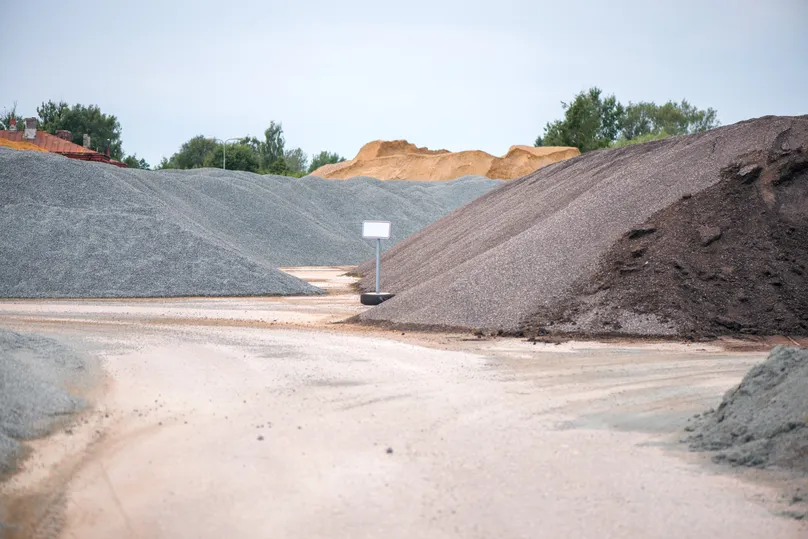Manufactured sand
Manufactured sand refers to aggregates produced through mechanical or industrial processes. It includes sand created by crushing rocks, quarry stones, or larger aggregates into sand-sized particles and blends of natural sand with industrial by-products, such as metal mining residues, tailored for specific construction needs. The benefits of manufactured sand include reduced reliance on depleting natural sand resources, enhanced consistency in particle size and shape, and improved mechanical properties for concrete and asphalt applications. However, challenges remain, including variability in quality due to differences in raw material sources, high processing costs, and resistance to its adoption over natural sand in some regions.
Some market-available manufactured sand products are listed below.
Crushed rock sand
Crushed from hard rock (e.g., granite, basalt), this sand is screened to produce sand-sized particles. It is commonly used in concrete production, road construction, and as a material for pavements. Crushed rock sand has been widely used and is well-established in markets where natural sand is scarce.
Natural sand blends
This type of manufactured sand is a blend of natural sand with fine aggregates derived from industrial by-products, such as quarry dust or stone crusher waste. These sands are typically used for plastering and non-structural concrete. They are gaining popularity in areas with limited natural sand availability, although quality consistency can vary.
Washed manufactured sand
Produced by processing crushed rock aggregates through washing to remove impurities, washed manufactured sand is used in high-strength concrete, specialty construction, and premium infrastructure projects. It is more commonly found in regions with stringent material standards, such as Japan.
A number of manufactured sand products under research or pilot stages are listed below.
By-product blended manufactured sand (e.g. metal mining residual)
Industrial by-products from metal mining, such as tailings or slag, are blended with natural sand or other fine aggregates. Research has demonstrated their feasibility in concrete and pavement applications, aiming to reduce waste and enhance material sustainability. These materials are still in the pilot research phase, with limited commercial adoption.
Carbon-captured manufactured sand
This type of sand is enhanced with carbon dioxide captured from industrial processes to create eco-friendly aggregates. Primarily used in carbon-neutral concrete applications, the goal is to reduce the construction industry’s carbon footprint. Research is ongoing to improve scalability and make this material more widely available.
Hybrid composite manufactured sand
This product is a blend of crushed aggregates with recycled sand-sized materials such as plastic or rubber, resulting in lightweight, eco-friendly aggregates. Research is exploring the use of hybrid composite manufactured sand in sustainable concrete, specialty pavements, and lightweight concrete materials. Market maturity is still in the early stages, with potential for niche markets.

References
- AggNet 2008, Manufactured Sand, viewed 28th November 2024.
- Aggregate Business 2017, A promising future for manufactured sand, viewed 28th November 2024.
- University of Queensland, Ore sand: a circular economy solution to reduce mineral wastes and improve global and sustainability, viewed 28th November 2024.
- Metso 2020, Manufactured sand – a solution to the global sand shortage, viewed 28th November 2024.
- United Nations Environment Programme (UNEP) 2019, Sand and sustainability finding new solutions for environmental governance of global sand resources, viewed 28th November 2024.
- Government of Western Australia Department of Water and Environmental Regulation 2024, Waste Authority Business and Action Plan 2024-25 - Supporting the waste avoidance and resource recovery strategy 2030, viewed 28th November 2024.